Year End Tax Planning
Year End Tax Planning
31 March is the tax year end for most of us. Here are a few things you can do by 31 March to save cut your tax bill.
Write off Bad Debts
If you have overdue debtors that you will probably never recover, you can claim a bad debt deduction for them. To claim them in this tax year you need to write them off by 31 March. The requirements are:
Proof that they are bad debts – i.e., evidence that you have chased the money
Physically write them off by 31 March – by putting through a credit note in your accounting system or recording that they are bad debts.
If the debtor does subsequently pay in the next tax year, that will be treated as taxable income.
Claim Business Mileage
If you use your personal vehicle for business, you can claim the business use. One of the simplest methods is to calculate your business kilometres for the year and claim the IRD kilometre rate (currently 73 cents/km). Fill out a logbook to calculate your business kilometres.
You can claim the kilometre rate for up to 5,000 business km’s per year. If you want to claim more than 5,000km’s, you will have to use actual vehicle costs.
Calculate Fringe Benefit Tax Exempt Days
If you are paying Fringe Benefit Tax (FBT) for a company vehicle, you do not have to pay FBT for days when the vehicle is not available for private use. Add up those days to reduce your FBT cost. Exempt days include days when the vehicle is:
- At an airport car park while the employee is away on business
- Out of action including being at the garage or panel beaters
- Stored at the employer’s premises so unavailable for the employee to use
- Used for an emergency call-out
- Out of town on business travel for 24 hours or more
Write Off Redundant Fixed Assets
Fixed asset that have been scrapped or are no longer useable can be written off and the remaining book value claimed as a loss on disposal. Review your fixed asset schedule from last year’s accounts for any such assets.
Write off Obsolete Stock
Obsolete stock must be physically removed by 31 March to avoid including it in your closing stock value. Also, stock can be valued at cost or, if lower, resale value. If the cost of selling stock is higher than the price you will get for it, it can be valued at nil.
Register for Ratio Method or Accounting Income Method (AIM) for Provisional Tax
Under the default method, your provisional tax is based on your previous year’s tax. There are two other methods available that base your provisional tax on your results during the year, increasing your provisional tax when you make more money and decreasing it when you make less. This helps you match tax payments with your cash flow.
The ratio method calculates provisional tax as a percentage of the sales in each GST return. The new Accounting Income Method (AIM), starting from 1 April 2018, calculates provisional tax based on the profit in your management accounts.
To use either of these methods for the tax year starting 1 April 2018, you need to make an election by 31 March 2018. If you think they may be helpful, give us a call to discuss.
Note, these methods are only available for the business. You cannot use them for your personal provisional tax if you are a shareholder employee as you do not have GST returns or management accounts to base them on.
Register Look-through Companies (LTCs)
Look through companies are treated like partnerships for income tax purposes with profits and losses flowing through to the shareholders’ individual tax returns. If you have a company making losses, an LTC allows you to offset the losses against your personal income rather than being trapped in the company.
To become a LTC for the next tax year, an election needs to be made by 31 March.
Consider Paying Dividends
If you have retained profits in your company, at some stage you will want to pay them out to shareholders. If your personal income is likely to rise in future years, there may be a tax advantage in paying a dividend this year to be taxed at a lower marginal tax rate.
Pay Expenses by 31 March
Some expenses can be claimed if paid by 31 March even if they relate to the following year. Examples include:
- Stationery, postage and courier costs
- Subscriptions
- Rates
- Road user charges
- Advertising up to $14,000 and used within six months following 31 March
- Employee payments such as holiday pay and bonuses that are used within 63 days after 31 March
- Insurance premiums up to $12,000 covering the following year
